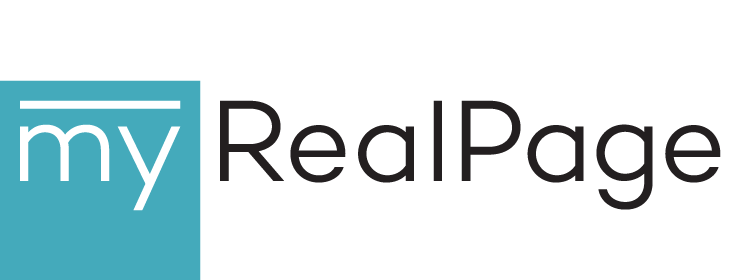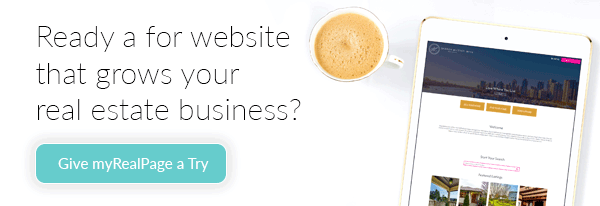How REALTORS® Can Use QR Codes and Why They Should

QR codes in this day and age?
No, you didn’t read that wrong. This not-exactly-new technology is indeed making a comeback this year.
QR codes — “quick response” codes, a type of barcode that can be scanned by personal mobile devices and used to link to websites, platforms or to exchange information — first became a household name in 2010.
Back then, QR codes were pretty much just a novelty. Brands used them for marketing gimmicks. They never really took off and were filed away as a failed tech trend in the West.
Fast-forward to today. In this strange time when we’re all trying to protect ourselves by reducing physical contact with people, places and things, the humble QR code is enjoying a resurgence.
It’s a simple, fast and effective way to bridge the physical world with the digital one. And it has a lot to offer brands and businesses who are looking for effective, COVID-friendly marketing ideas.
That includes real estate agents.
Keep reading to learn how and why REALTORS® can use QR codes today, plus three strategic ideas for making QR codes a part of your real estate marketing.
How to Set Up a QR Code
Don’t be intimidated; the process of getting your own QR code(s) is surprisingly simple, thanks to online QR code generators. The best part: they’re typically free to use.
Most online QR code generators simply require you to enter your email address, select the destination type for your code (such as a website, phone number or SMS) and then enter the destination data (such as the specific URL, number or SMS message).
Some offer options to customize the appearance of the QR code, by editing the colour or shape.
We like the free QR code generators offered by Shopify, QRCode Monkey and QR Code Generator.
Static QR Codes vs. Dynamic QR Codes
There’s one more thing you need to decide when creating a QR code: would you like it to be static or dynamic?
A static QR code has a destination that can’t be edited. Meaning that if you create a static QR code that links to your website, you can’t change it so that it links to your Instagram account instead.
With a dynamic QR code, you can edit the code’s destination. This is beneficial if, for instance, you don’t want to have dozens of different QR codes for every new listing or real estate landing page.
Many dynamic QR code generators offer analytics, too, which can be really valuable when you’re trying to understand how potential leads are interacting with your codes.
These dynamic QR code generators — such as QR Code Management and uQR — typically come with a monthly fee. If you have a Google account, the QR Code Generator offers free dynamic QR codes.
Idea #1: QR Codes on For Sale Signs
The ultimate goal of QR codes is to provide a seamless connection between something physical and something digital. They offer users a gateway to more information, without needing to ask for it or hunt it down.
That’s why a lawn ‘For Sale’ sign is an excellent opportunity to experiment with using QR codes in your real estate business.
Think about the purpose of a real estate lawn sign. It’s to communicate to anyone who sees the sign that “Hey! This house could be yours!”
Typically, when someone sees that sign and is interested in learning more, they make note of the real estate agent or brokerage name and then remember to look it up online when they get home.
But remembering is the hard part. People often forget. And every person who forgets is a potential lost lead.
Enter QR codes. If the For Sale sign featured a visible QR code, a curious passerby could scan it to receive information about the house at that very moment — no need to Google it at home.
How:
This one requires designing and purchasing new For Sale signs that feature your QR code.
The QR code should be dynamic — so you can edit it as needed — and should link to the current listings page on your website. When a passerby scans it, they’ll be able to find the listing they spotted, as well as any others that pique their interest.
This way, you don’t need to create multiple QR codes for each and every one of your listings and you’re encouraging further exploration of your website.
Idea #2: QR Codes at Open Houses
Open houses became a little more complicated this year, as agents have had to contend with social distancing guidelines and gathering restrictions.
QR codes are a great tool for helping streamline open houses in the time of COVID, as well as making them safer. They can be used to reduce the amount of physical contact that takes place amongst attendees, facilitate contact tracing and generate leads.
Attendees can scan a QR code using their own devices — not a high-touch communal tablet — which will take them to an interactive form. They’ll sign in and provide all the relevant details (their name, contact information and real estate interests).
How:
Start by signing up for an open house app (if you’re not already using one), such as Happy Open House. Apps like this help make your open house a paperless experience, as well as a strategic one.
These apps provide customizable, professional-looking digital forms for your attendees to fill out. They also provide agents with open house reports (that can be shared with sellers), analytics and tools for follow-ups.
Some of these tools offer their own QR codes that link to your personalized open house form. Others provide a link that you can use to create your own QR code.
Once you have your digital form and QR code established, create and print the code (along with instructions), and place it where attendees will see it as soon as they walk in.
Idea #3: QR Codes on Real Estate Postcards
It’s hard to measure the success of printed real estate marketing materials. Your website? No problem; there are analytics for that.
It’s trickier in the physical world, where you can’t analyze how many potential leads actually read your content and then head to your website.
That’s where QR codes come in. They can be especially effective for print marketing efforts like real estate postcard campaigns.
Adding a QR code to your postcard campaigns can achieve two things:
- It offers a more strategic call-to-action. Let’s say your postcard campaign was targeting potential first-time buyers. You could develop a real estate landing page with content or offers for that demographic and then create a QR code that links to that landing page.It boosts your odds of success; rather than relying on the chance that a recipient will call you or head to your website, you can give them an alternative option that offers a more targeted, personalized experience.
- It offers insights. Nearly every paid QR code generator offers analytics and tracking to help you understand how many people are actually using your QR code. That kind of insight can help you effectively tailor your future campaigns to better target the right audience and hit your marketing goals.
How:
Like we said above, landing pages are a great way to make use of QR codes on real estate postcards.
You can develop a landing page that specifically targets the intended audience of your postcard campaign with personalized, valuable content, create a QR code for that landing page, and then write a call-to-action for your postcard that encourages recipients to scan the code to receive the content.
Use a dynamic QR code for this idea, so that you can access the data and insights once your campaign is live and your postcards have been sent out.
Which QR code idea are you most likely to try in your real estate business?
Last Updated on June 27, 2024 by myRealPage


